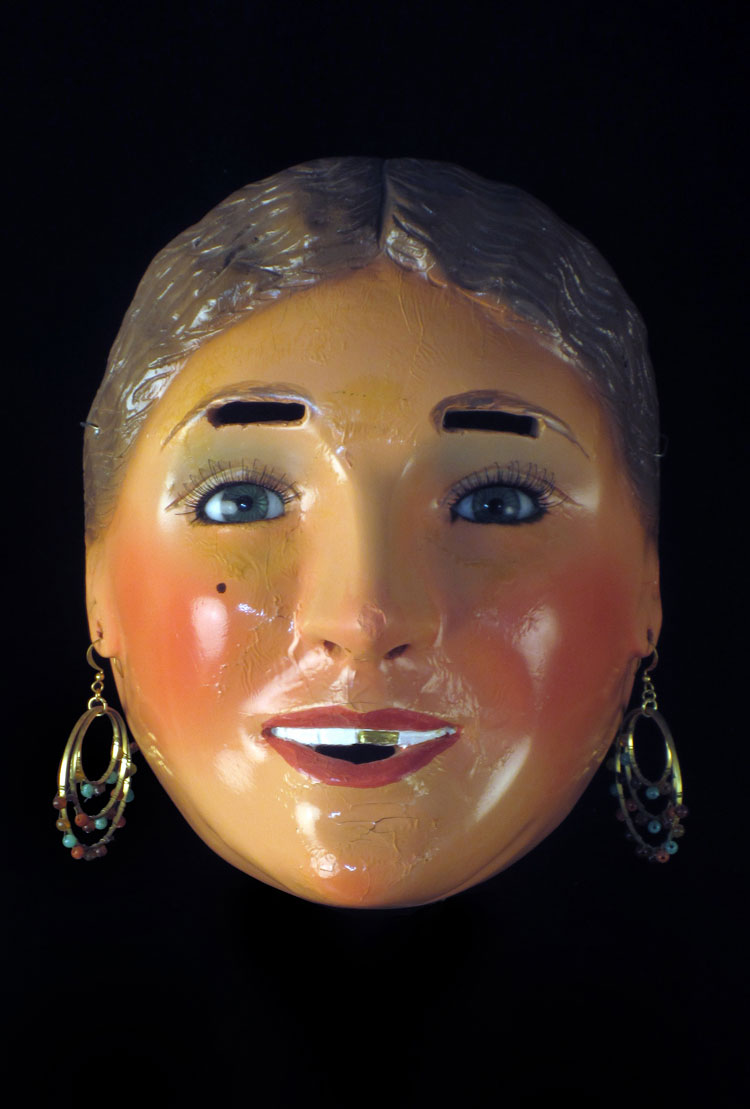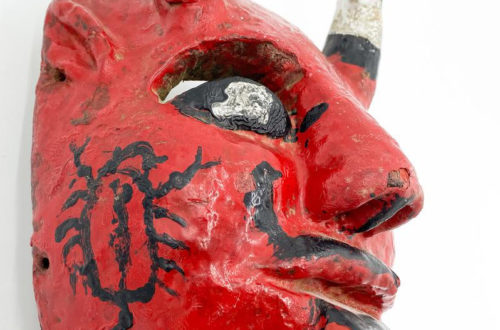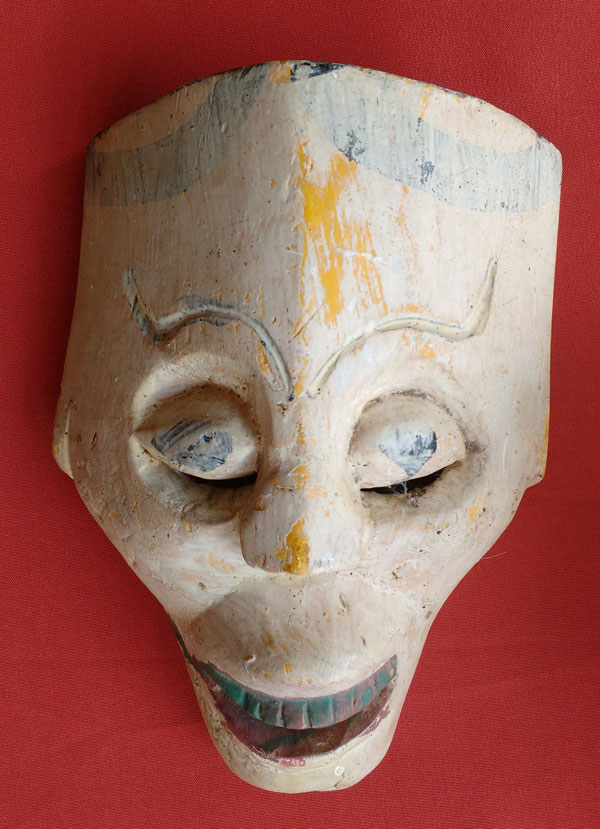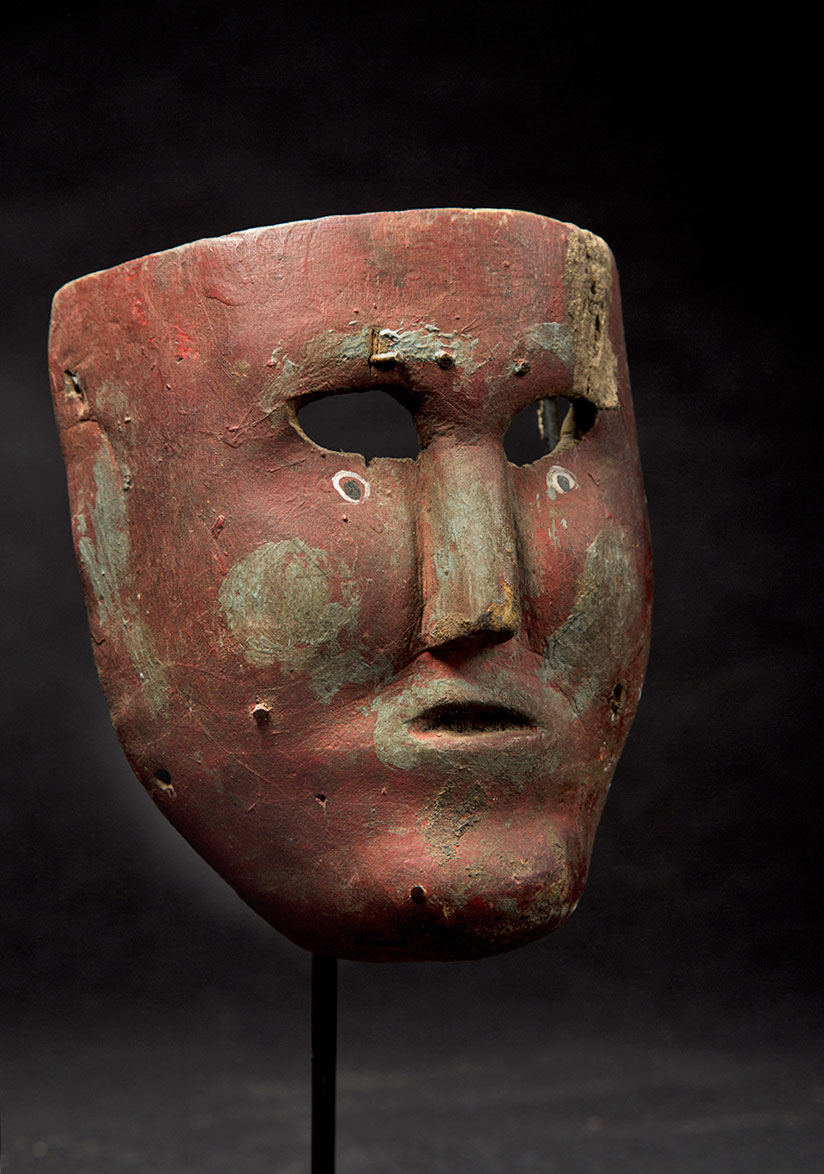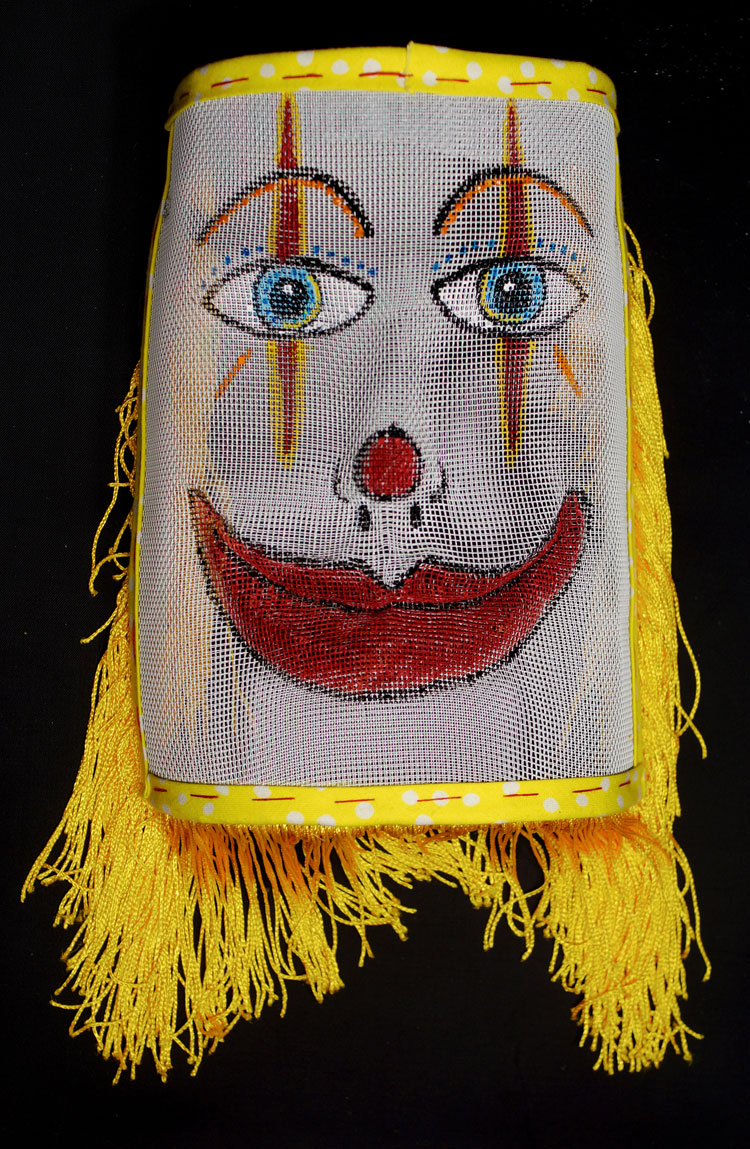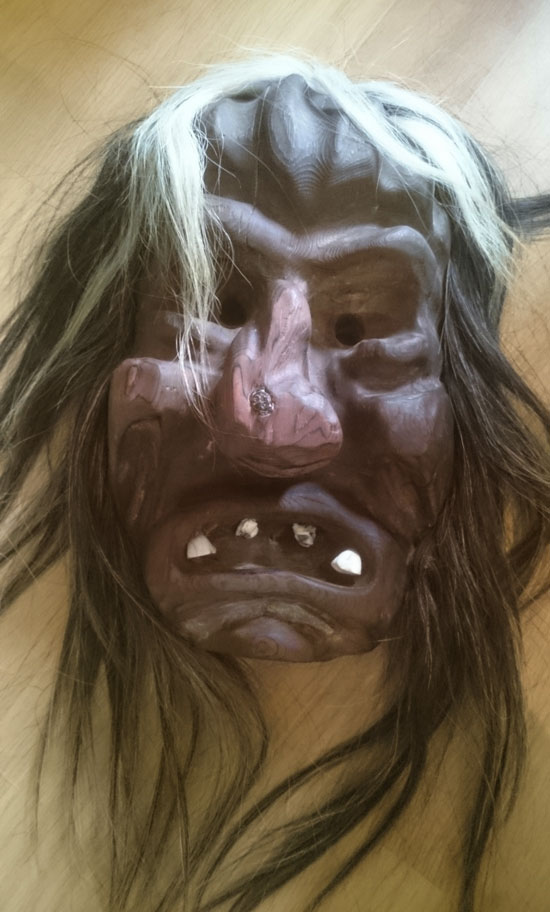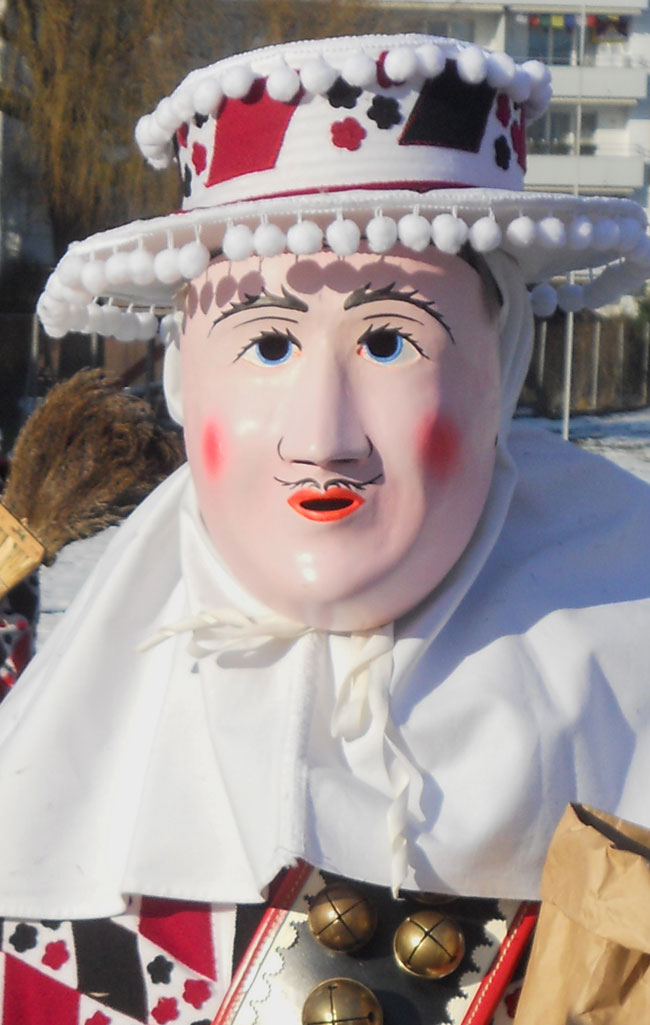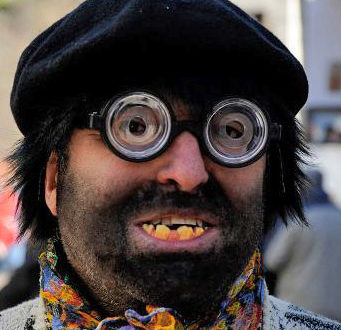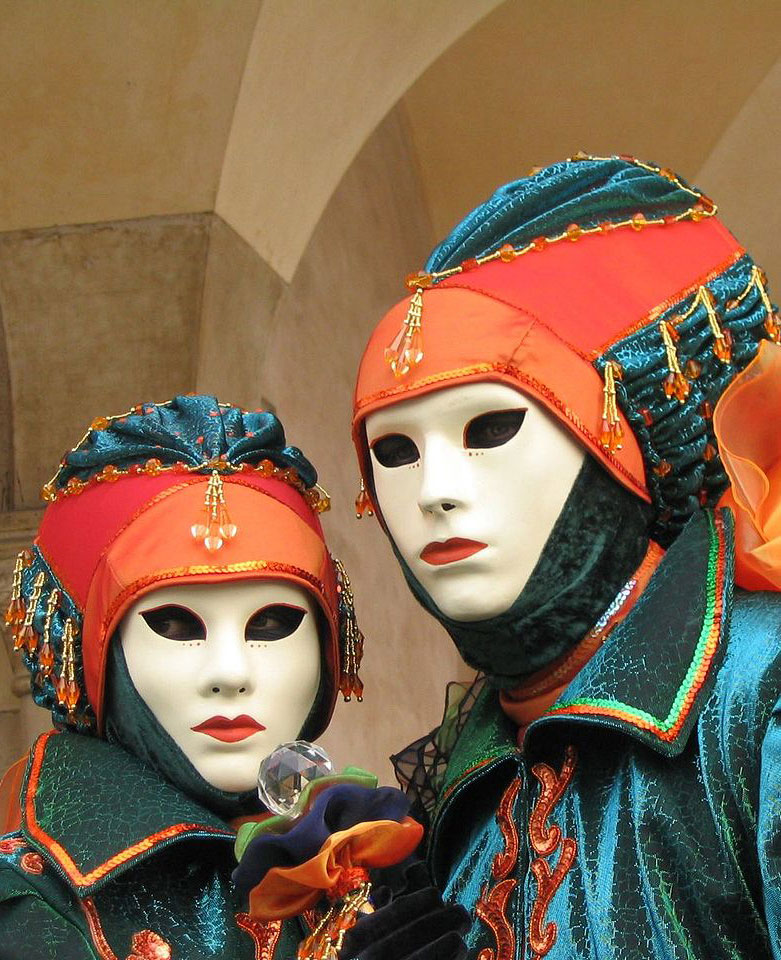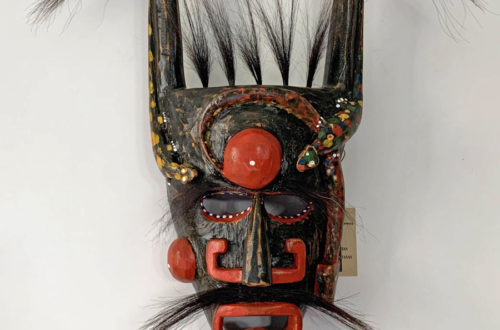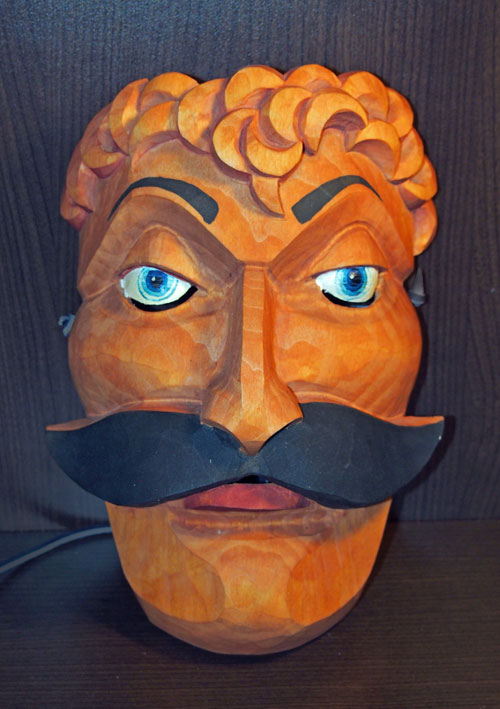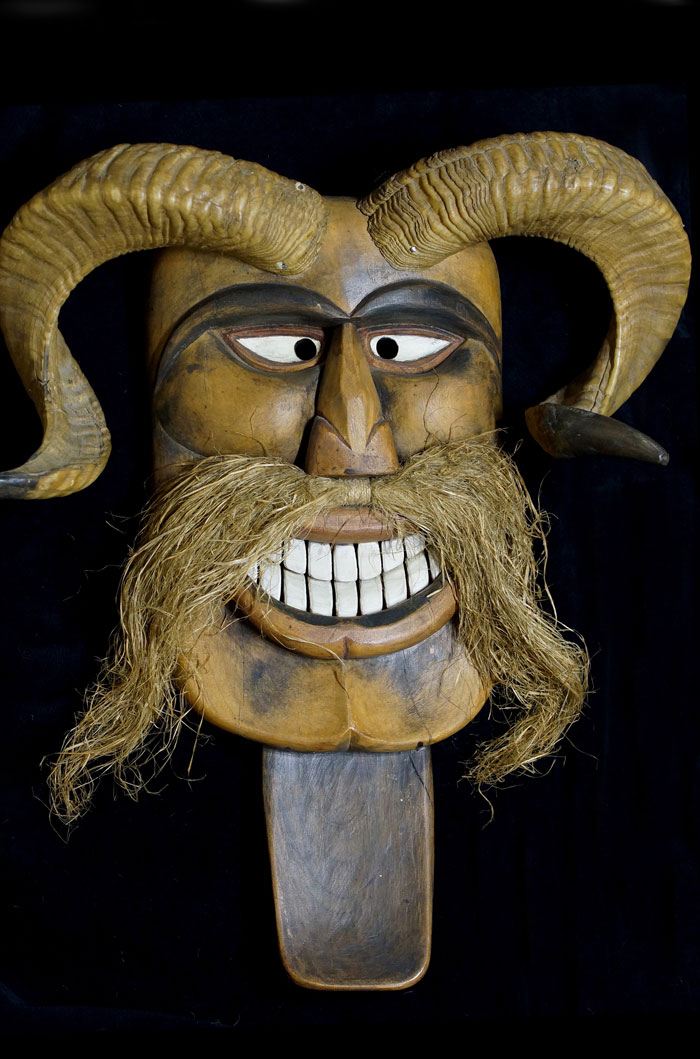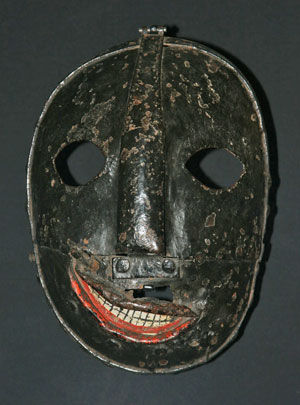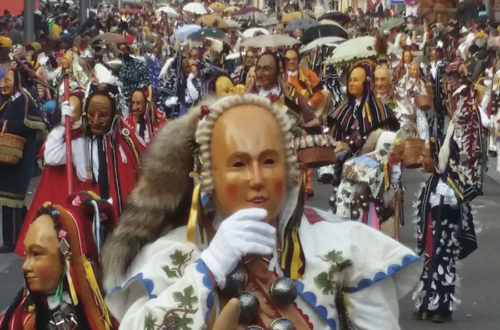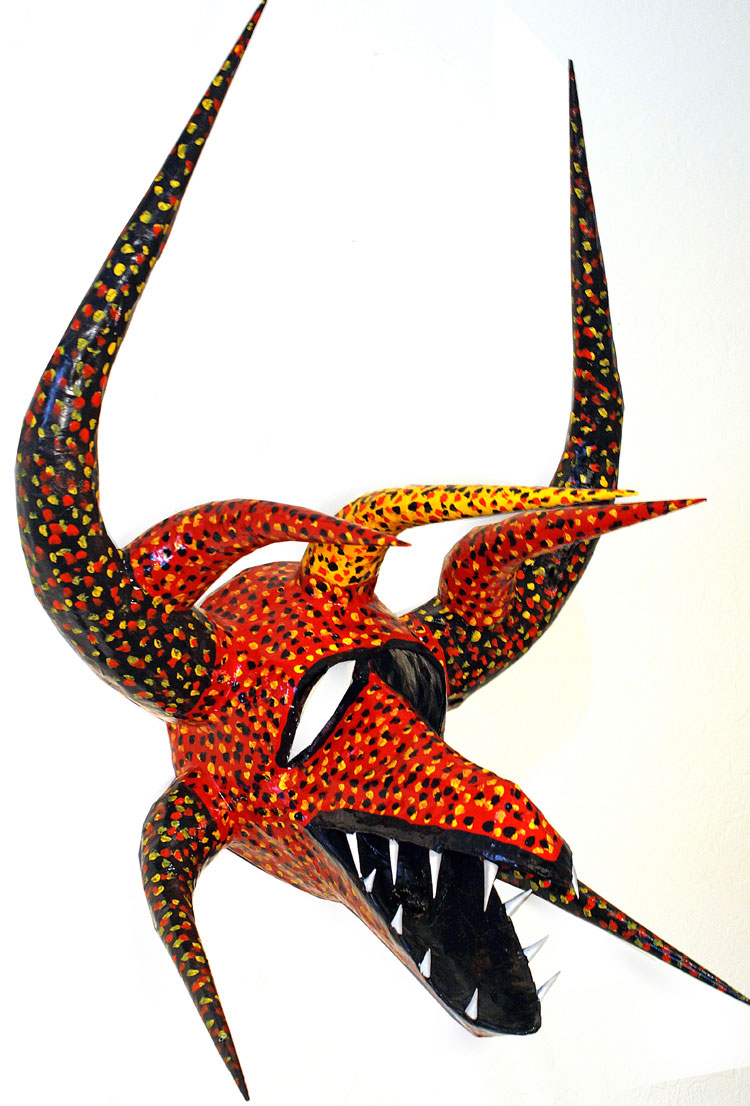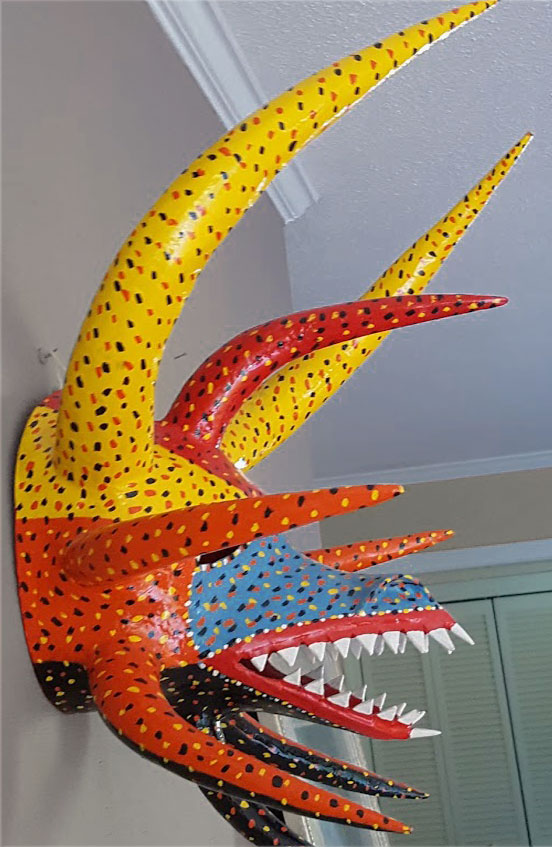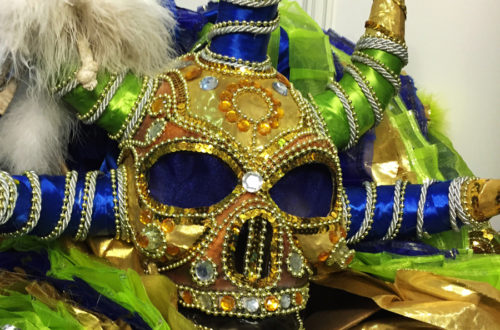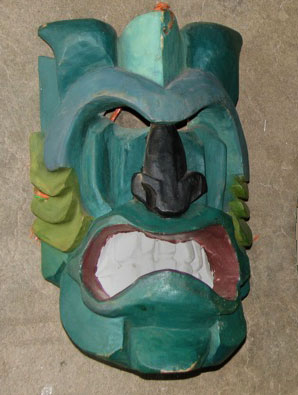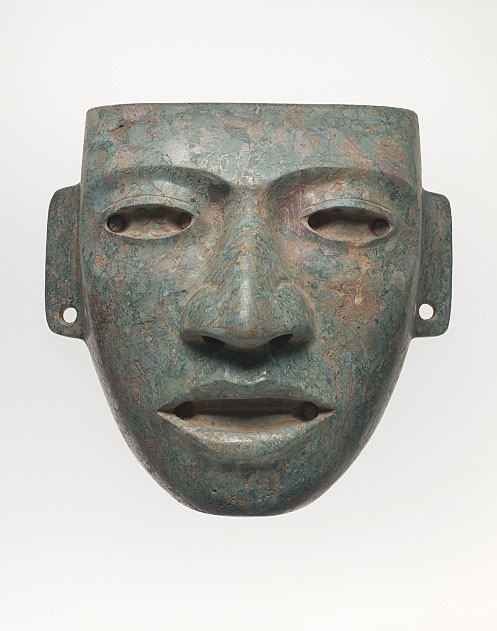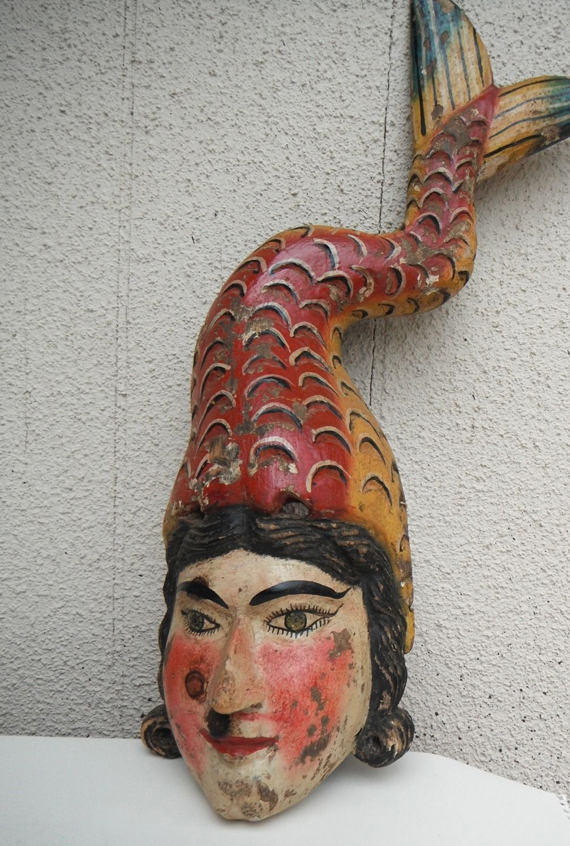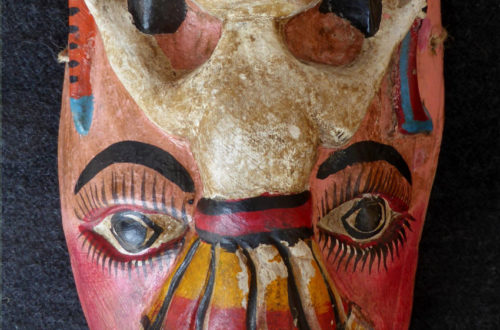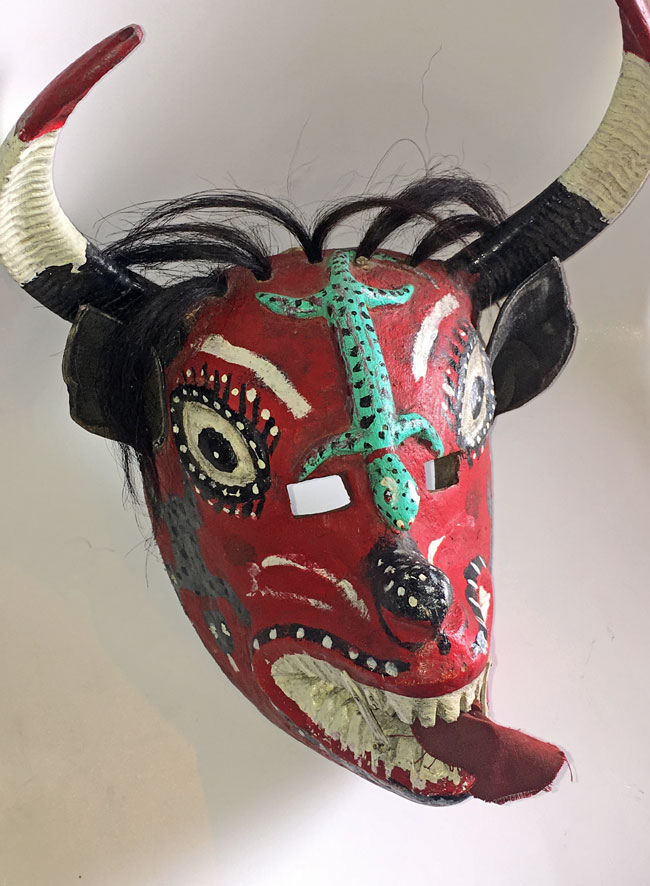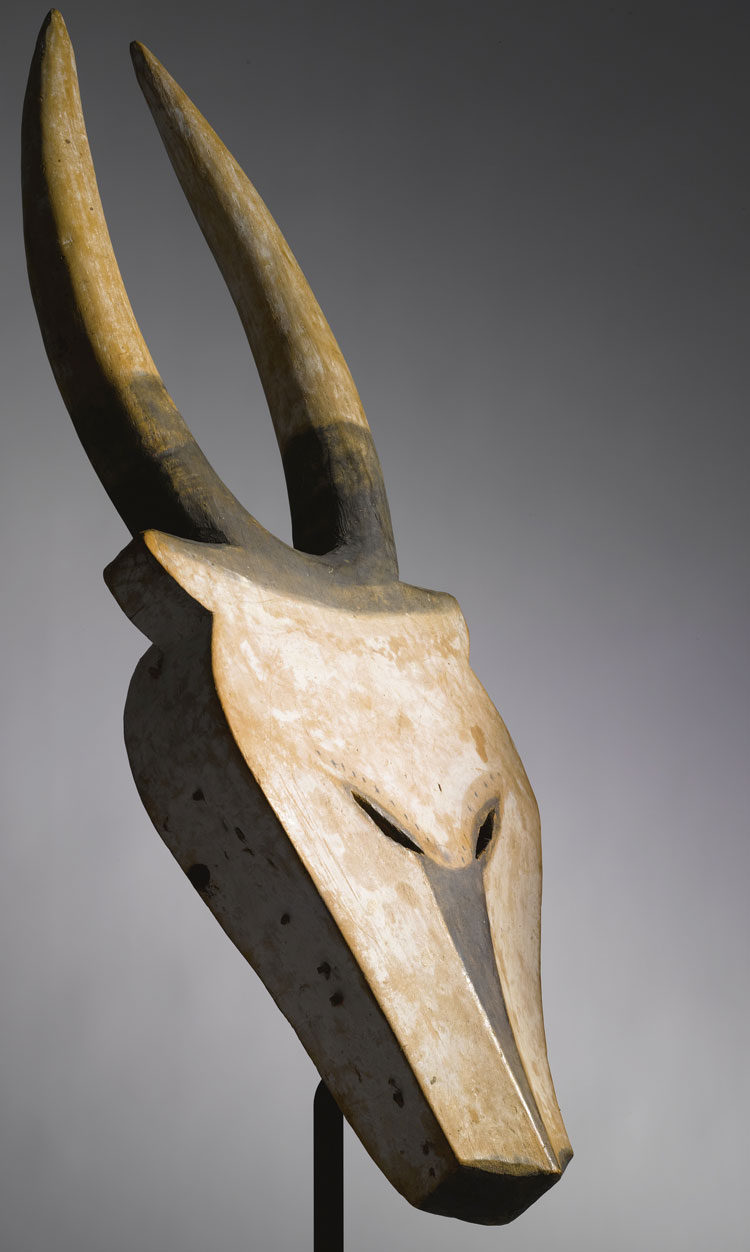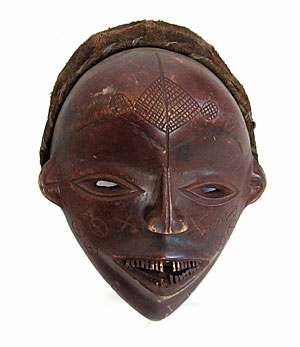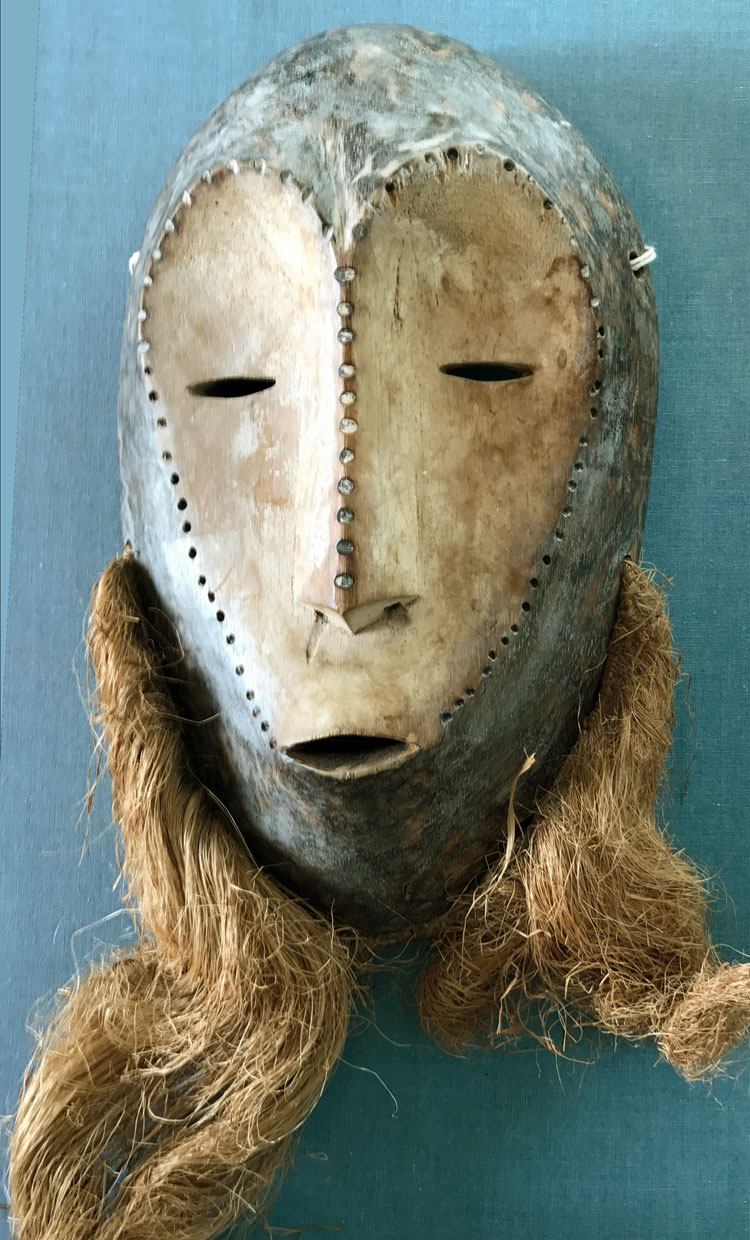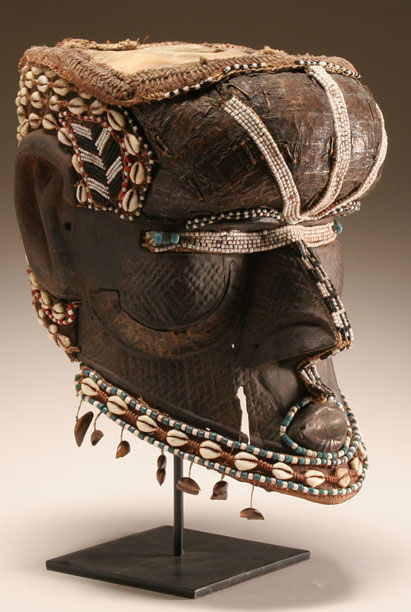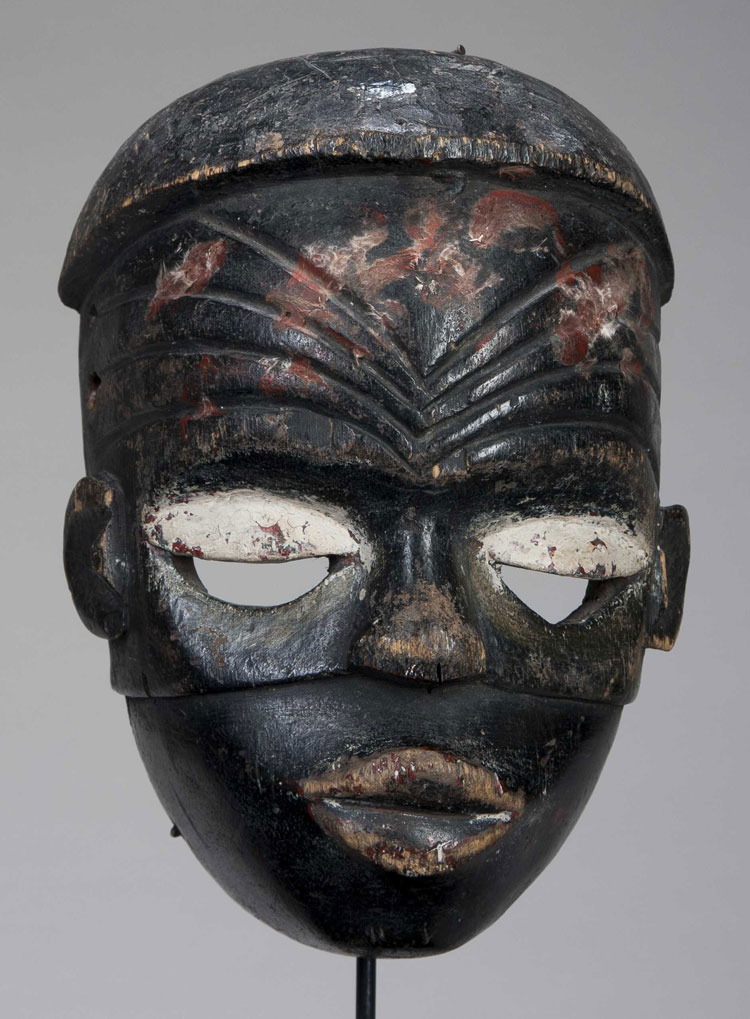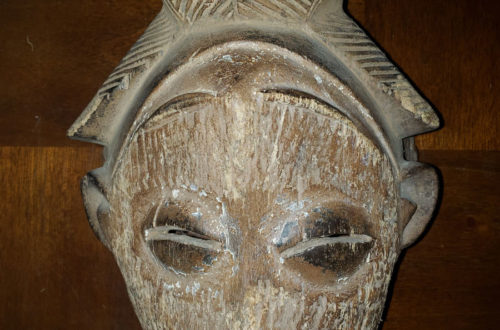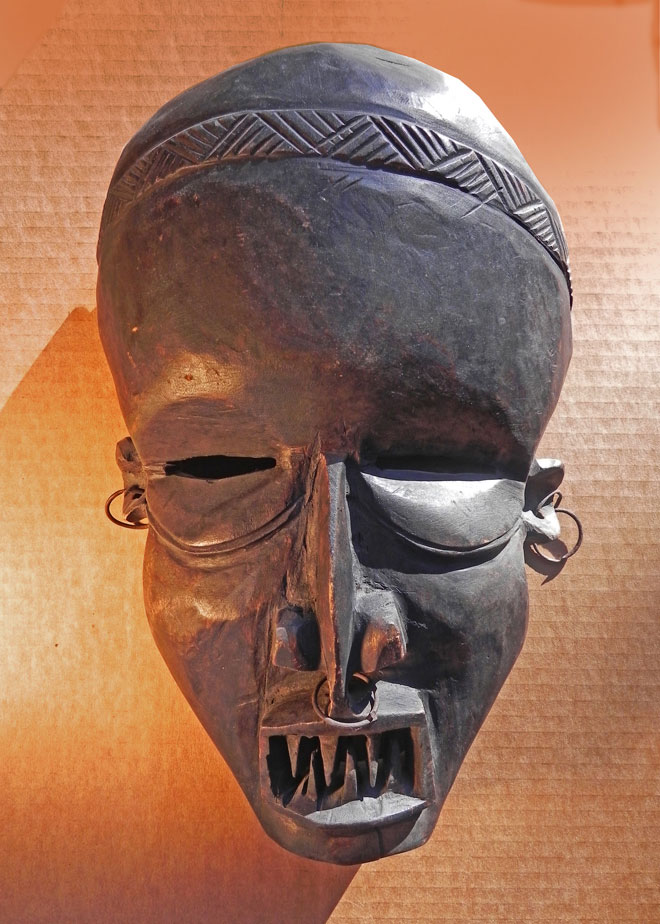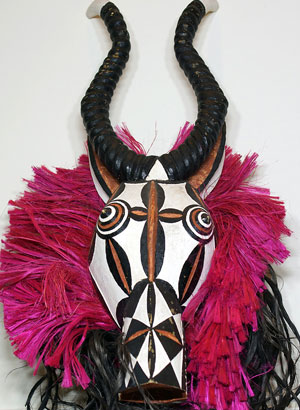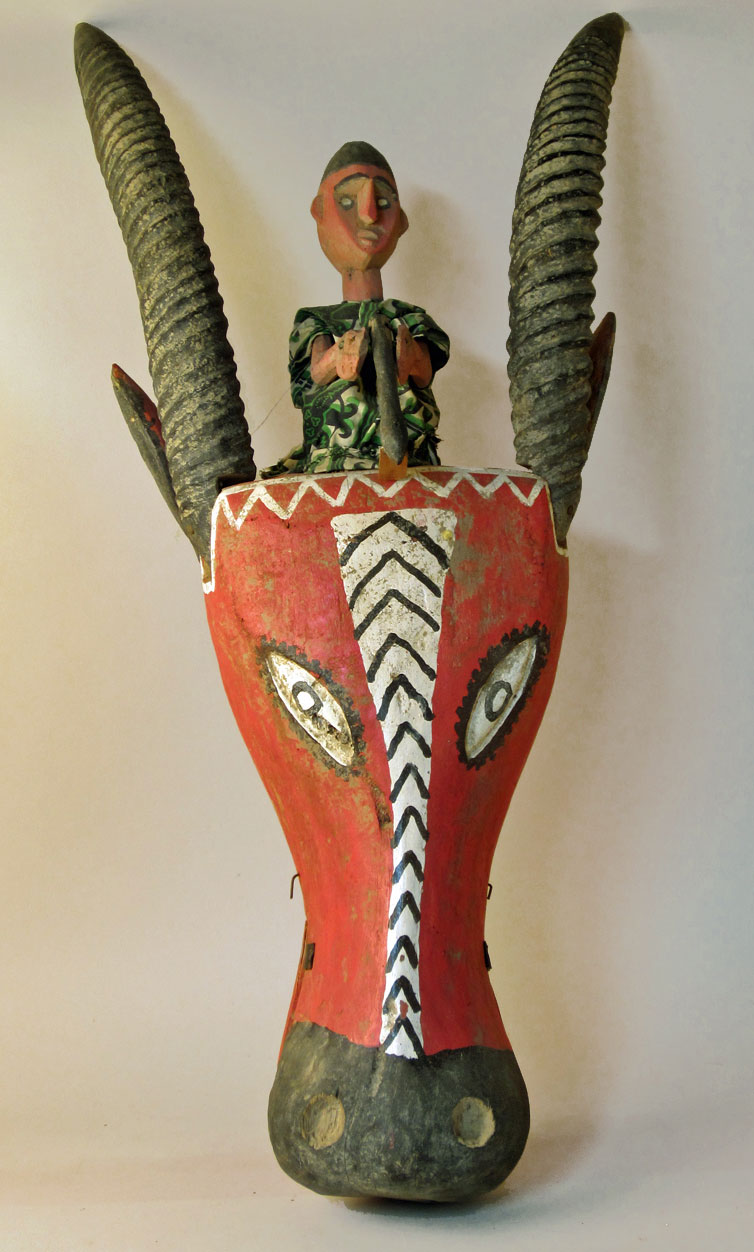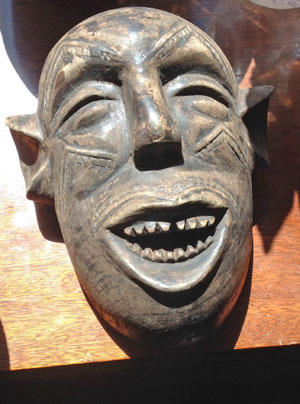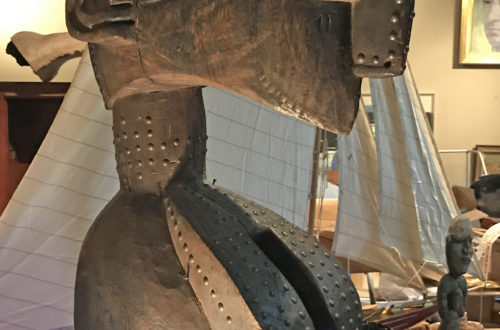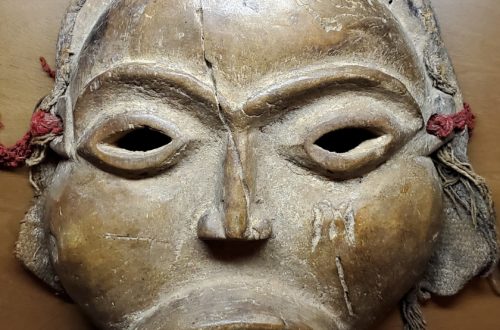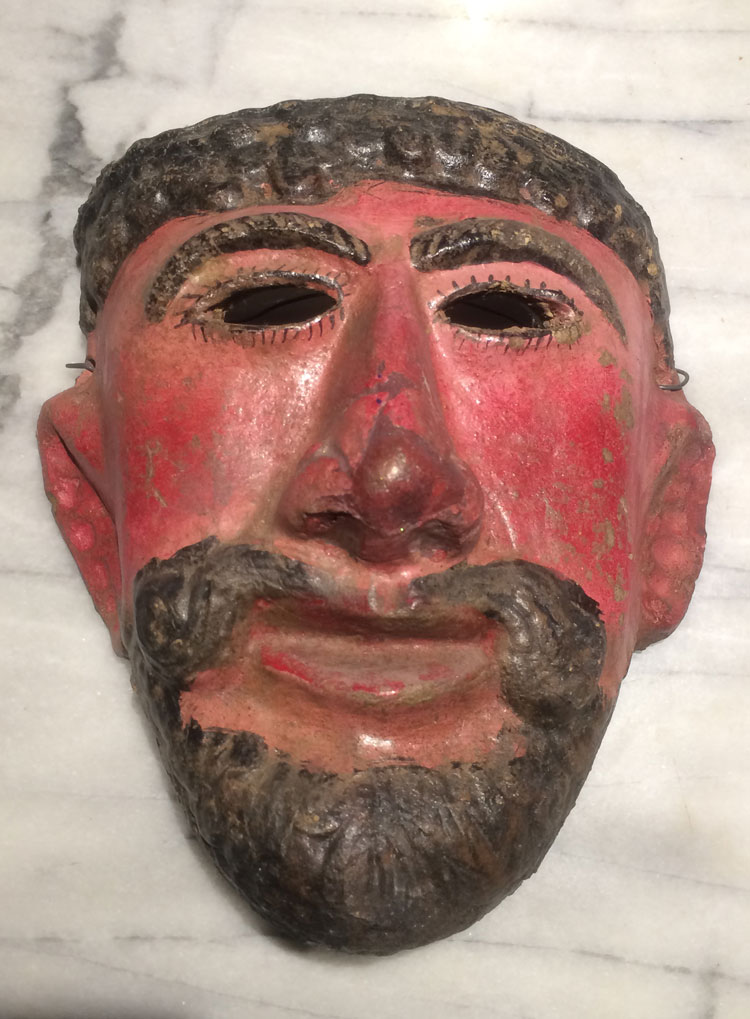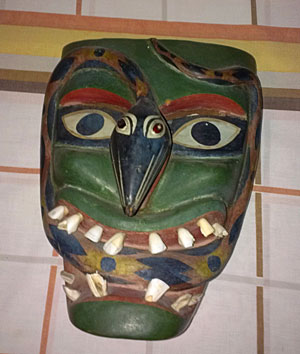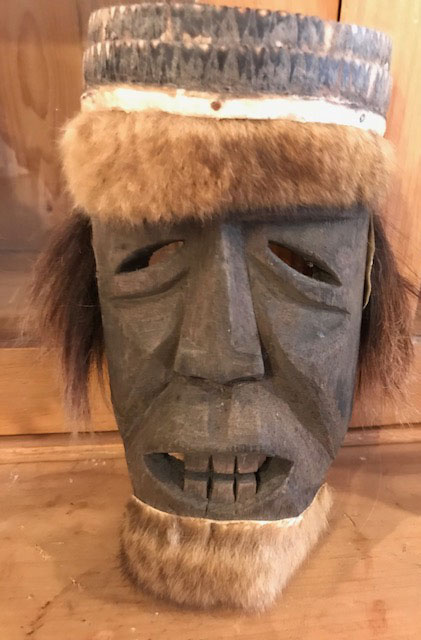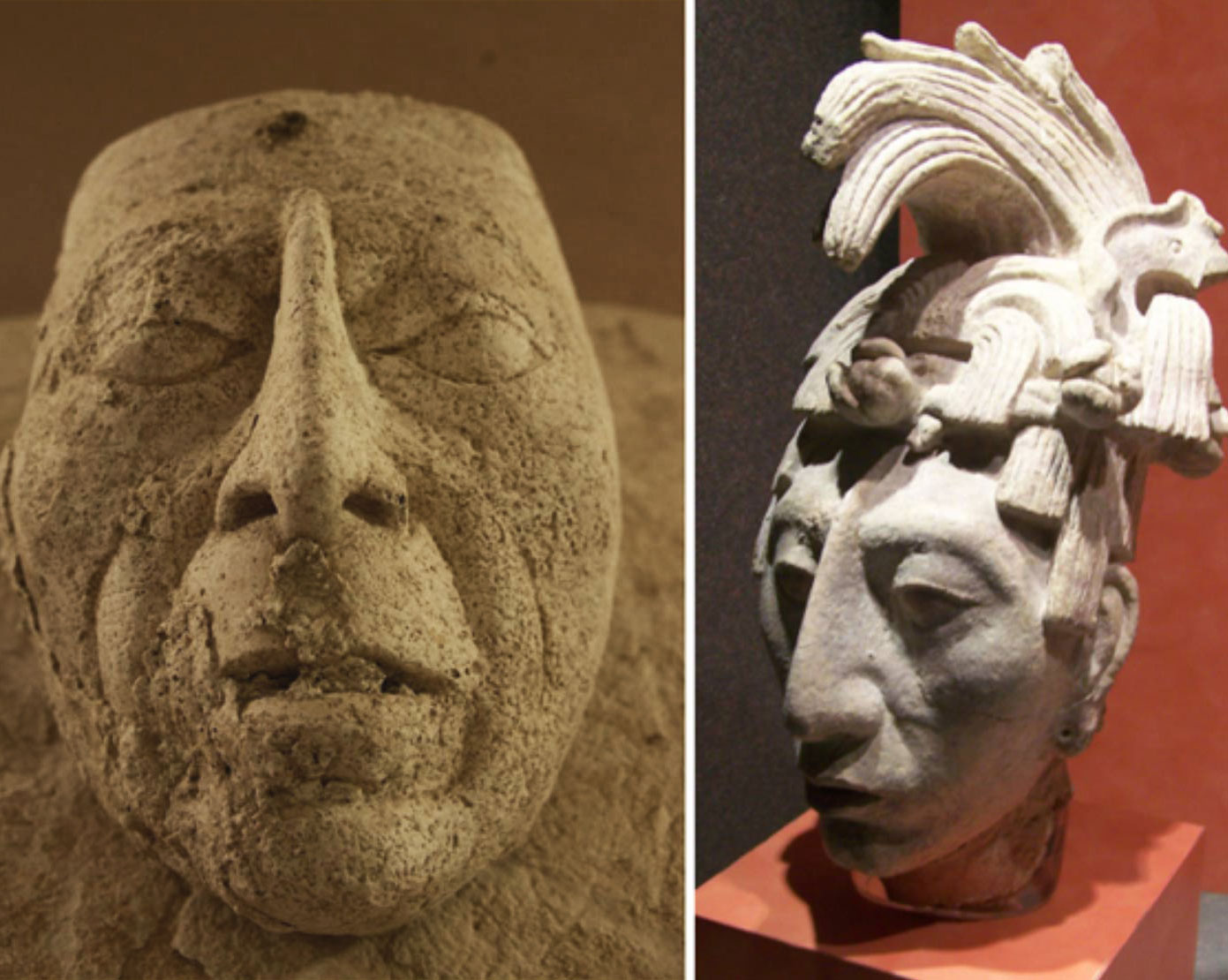It’s an official holiday that begins a five-day celebration before the Catholic lent begins on Ash Wednesday. We’re talking about food, drink, parades, costumes, music and dancing in the streets. This particular mask represents a pretty woman called a Mujer and she is from the state of Tlaxcala. The carved-wood mask has glass eyes with lids that move, real jewelry and a gold tooth. She would be portrayed by a boy who could make the Mujer wink at the Paraueros and Charros with whom the young boy/woman is dancing. It’s very similar to the Catrine masks that also come from Tlaxcala. And there are hundreds of different looking masks being…
-
-
Mardi Gras goes back to 1699.
A French-Canadian explorer first brought the carnival customs, then Creole society began masking and dancing at private balls while revelers in disguise roamed the streets of New Orleans. Mardi Gras is also celebrated in many of the Cajun communities scattered throughout much of Louisiana, USA. These bizarre masks made out of window screen and other cheap materials are used by the locals even in the small villages close to the swamps. The masks and costumes are pure American folk art. Wild and crazy antics, much different than what happens at the parade in New Orleans, are practiced on this famous holiday by the rural Cajuns. Mardi Gras has some other…
-
Carnival time in Venice is the ultimate.
Italy’s biggest carnival inspires some of the most lavish costumes and masks. These simple white masks are not supposed to distract from the lavish costumes. It’s said that the Carnival of Venice was started from a victory of a small war in the year 1162. After that it went in and out of popularity. After a long absence, the Carnival returned in 1979. The Italian government decided to bring back the history and culture of Venice, and sought to use the traditional Carnival as the centerpiece of its efforts. The re-development of the masks began as the pursuit of some Venetian college students for the tourist trade. Since then, approximately…
-
Busos scare away Winter in Hungary.
Thought you hated the cold weather? The terrifying Hungarian festival where revelers don grotesque masks to scare off winter is a sight to behold. Mohacs Busok (Mask-people from Mohacs town) The Busojaras (Hungarian, meaning “Buso-walking”) is an annual celebration of the Croatians living in the town of Mohacs, Hungary, held at the end of the Carnival season and ending the day before Ash Wednesday. The Busó festivities are a six-day carnival in late February that involves a lot of activities, including a children’s costume contest, a display of the art of mask carvers and other craftspeople, the arrival of more than 500 busós in rowboats on the Danube for a…
-
The Vejigantes steal the show in Ponce, PR.
With the exception of a few other Caribbean islands, this spectacular type of Devil mask is unique in the world of mask design. Even though these masks have a long snout and lots of big horns, they are made of paper mache which is light weight and comfortable to wear. Vejigantes characters carry blown-up cow bladders with which they make sounds and hit people throughout the processions. The crazy antics of these guys make them the most popular feature at the parades and other events. The Carnaval de Ponce is an annual celebration that lasts one week and ends on the day before Ash Wednesday. Thus, it is generally held…
-
Pre-Columbian stone and clay
Q: You looked into a mask for me last year. (#879, 02.01.2016, in the Mexico archive) It was a small terra-cotta face that might be part of something bigger. Will this be something you could do an appraisal on? If so please let me know how to do it. If not can you recommend someone to do it. Thank you, Brandon, 1130 (The mask he refers to is described below with the photo.) A: From the Pre-Columbian era of Latin America, this little head is not a mask, but served some other purpose. There were also full-size masks made of clay or stone from the same cultures that could…
-
Beautiful Kwele antelope mask
Q: I recently purchased this donkey mask on eBay. It weights 3 pounds and is 17 inches long. The seller and I knew it was far under-priced for such a gorgeous mask. I looked it up and from what I gather it’s either from Portugal or Spain, but I’m not entirely sure because similar masks don’t have leather straps and metal inlay detail. Forest, 1129 (He collects animal masks of all kinds and is especially fond of Kwele antelopes.) A: I wrote back that he was correct on location, but that it was decorative wall art, not a real mask. Instead of just writing back to him I decided to…
-
A Tale of Two Masks from Nigeria
Q: This is another mystery mask from my collection. When I purchased it years ago, it was described as an old “Cross River” mask, but I haven’t been able to find anything similar in searches using that description. It appears to be old and used with surface wear, stains and multiple layers of paint.There’s a square slot and a few nails at the top where it may have had a figure or crest attached at one time. Hoping one of your African experts can shed some light on this. Dan, 1128 A: The first mask shown is from the Ibibio people who live in the Cross Rivers area of southern…
-
Sogo Bo rod puppet head from Mali
Puppet heads can fit into a mask collection very nicely. This 36 inch high antelope could easily be the largest “mask” on your living room wall. The Bozo people of Mali enjoy puppet performance done outside in a curtained enclosure where the puppeteers manipulate their characters by working from below with an extended rod. This one is Daje, a roan antelope who’s mouth and the little farmer with a hoe between his horns, can be activated with strings from below. It resembles a mask until you look at the rear. Another nice thing about African puppet heads is they come from actual performers who have used them. They are true…
-
Mexican mask of clay
Q: Thank you for taking time to comment on my last submission. Those kind words reignited my love for these wonderful artifacts, which leads to the following request. I have recently come across another mask that sparked my interest. It is billed as a hand-carved 19th century Mexican mask. It appears, however, that this is a terracotta mask, which calls into question the seller’s billing. I am aware that terracotta masks were made but were done so in the pre-Hispanic period. The seller, who is not a professional, is asking $75 for the mask. Is the mask a hoax or worth the asking price? Thanks in advance for any help…
